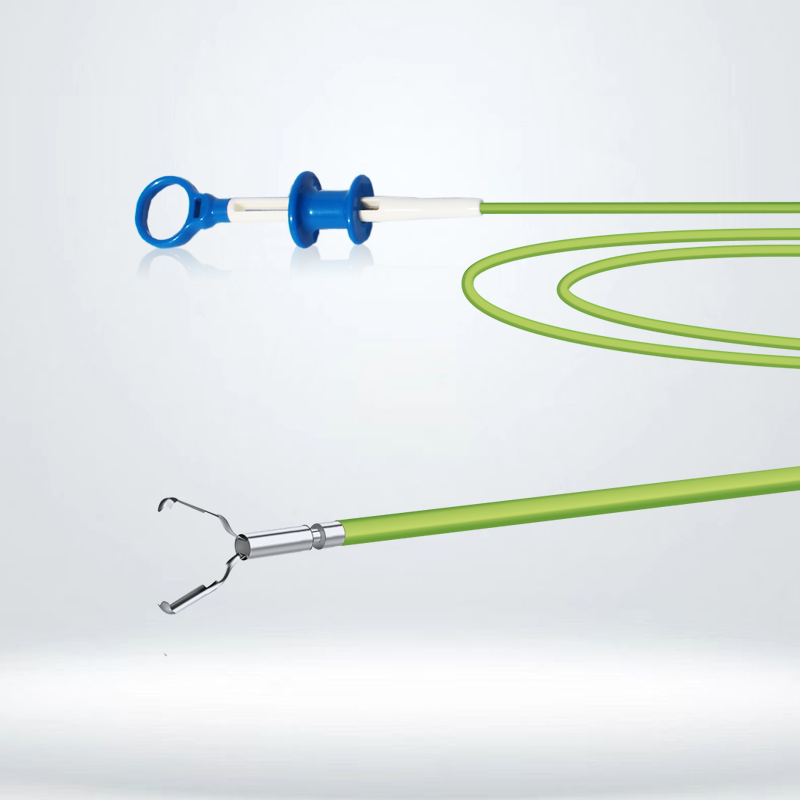In the ever-evolving landscape of medical technology, innovations often lead to revolutionary changes in patient care. One such innovation that has transformed the medical field is the disposable hemoclip. In this article, we will explore the advantages of disposable hemoclips compared to traditional methods of bleeding control and shed light on the impact they have had on medical procedures and patient outcomes.
A Brief Introduction to Disposable Hemoclips
A disposable hemoclip is a small, specialized medical device designed to control bleeding during various medical procedures. These tiny yet powerful clips can be applied to bleeding tissues with precision, offering a less invasive and highly effective alternative to traditional methods.

Comparative Advantage: Disposable Hemoclips vs. Traditional Methods
1. Precision and Accuracy
One of the most significant advantages of disposable hemoclips is their precision and accuracy in controlling bleeding. Traditional methods often require surgeons to manually suture or cauterize bleeding vessels or tissues. This manual approach, while effective in many cases, may not achieve the same level of precision as hemoclips.
Disposable hemoclips, on the other hand, can be positioned with remarkable accuracy, even in challenging anatomical locations. This precision minimizes the risk of complications and the need for further invasive interventions. For procedures where precision is paramount, such as gastrointestinal endoscopy, hemoclips have become the standard of care.
2. Minimized Invasiveness
Traditional methods of bleeding control often involve surgical incisions and suturing, which can be more invasive and may require longer recovery times. Disposable hemoclips, by contrast, are applied externally or internally through endoscopy, bronchoscopy, or other minimally invasive techniques. This minimizes trauma to the patient, reduces post-operative pain, and speeds up recovery.
3. Reduced Risk of Infection
In traditional surgical procedures, the risk of infection is always a concern, as open wounds provide a pathway for pathogens to enter the body. Hemoclips reduce this risk by minimizing the size and number of incisions, thereby reducing the potential points of infection. This advantage is particularly important in procedures where the risk of infection must be kept to a minimum, such as gastrointestinal surgeries.
4. Cost-Effective Solution
While disposable hemoclips themselves may seem costlier than traditional suture materials or cautery tools, they often prove to be more cost-effective in the long run. This is because they reduce the need for more extensive surgical interventions, shorter hospital stays, and a decreased risk of complications. In essence, they optimize resource utilization and healthcare spending.
5. Enhanced Safety
The precise application of disposable hemoclips enhances patient safety during complex medical procedures. By swiftly and effectively controlling bleeding, they minimize the risk of hemorrhage-related complications, such as organ damage or the need for blood transfusions. This safety advantage is invaluable in critical situations where every moment counts.

Future Developments and Conclusion
As the medical field continues to advance, researchers and engineers are constantly working to improve the design and functionality of disposable hemoclips. These innovations aim to make hemoclips even smaller and more maneuverable, enabling their use in even more intricate procedures. Additionally, the integration of imaging technology into hemoclips is on the horizon, promising real-time visualization of treated sites and further enhancing precision and safety.
In conclusion, the disposable hemoclip represents a groundbreaking advancement in bleeding control within the medical field. When compared to traditional methods, hemoclips offer precision, minimally invasiveness, reduced infection risk, cost-effectiveness, and enhanced safety. As technology continues to evolve, we can expect even more remarkable developments in this field, ultimately benefiting both patients and healthcare providers alike. Whether you're a healthcare professional or a patient, it's clear that the era of disposable hemoclips has brought transformative changes to the world of medicine.




Comments
All Comments (0)